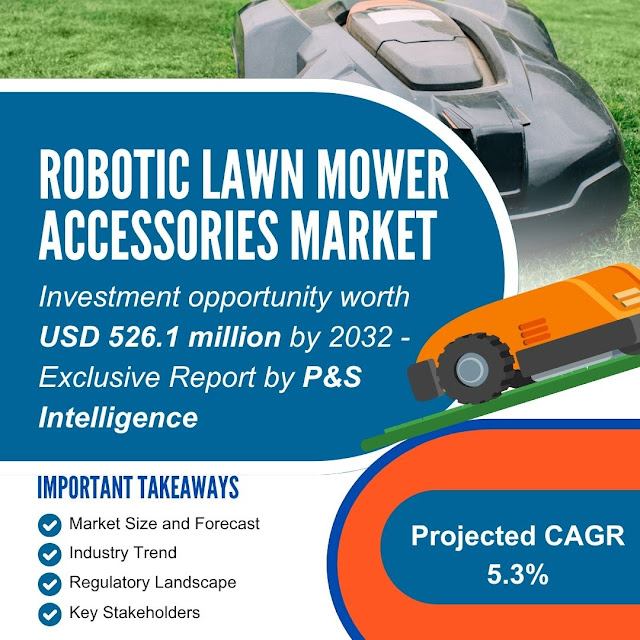The global compound semiconductor market, valued at $41.2 billion in 2024, is positioned for steady and substantial growth over the next eight years. Industry analysts project the market will advance at a compound annual growth rate (CAGR) of 7% during 2025-2032, ultimately reaching $70 billion by 2032. This growth trajectory reflects the increasing demand for high-performance semiconductor solutions that silicon-based technologies cannot adequately address, particularly in applications requiring superior speed, efficiency, and power handling capabilities.
Understanding Compound Semiconductors' Competitive Advantages
Compound semiconductors, composed of elements from different
groups in the periodic table, offer significant performance advantages over
traditional silicon semiconductors. Materials such as gallium arsenide (GaAs),
gallium nitride (GaN), silicon carbide (SiC), and indium phosphide (InP)
possess unique electrical and optical properties that make them essential for
advanced electronic and optoelectronic applications.
These materials excel in high-frequency applications,
operating at speeds that silicon cannot match while maintaining superior power
efficiency. Their wide bandgap properties enable operation at higher voltages
and temperatures, making them ideal for power electronics applications where
efficiency and thermal management are critical. Additionally, compound
semiconductors' direct bandgap characteristics make them superior for optical
applications, including light-emitting diodes (LEDs), laser diodes, and photovoltaic
cells.
5G Infrastructure Fuels Market Expansion
The global deployment of 5G networks represents one of the
most significant drivers of compound semiconductor market growth. 5G
infrastructure requires RF components capable of operating at millimeter-wave
frequencies, where compound semiconductors like GaAs and GaN demonstrate clear
superiority over silicon alternatives. Base stations, small cells, and massive
MIMO antenna systems all rely heavily on compound semiconductor technologies to
achieve the performance specifications required for 5G networks.
The transition from 4G to 5G involves not only new
infrastructure deployment but also significant upgrades to existing networks.
This dual requirement has created sustained demand for compound semiconductor
components, with telecommunications equipment manufacturers investing heavily
in advanced RF solutions. The ongoing global 5G rollout, particularly in
emerging markets, ensures continued growth in this segment throughout the
forecast period.
Electric Vehicle Revolution Accelerates SiC Adoption
The electric vehicle (EV) industry has emerged as a major
growth catalyst for compound semiconductors, particularly silicon carbide (SiC)
power devices. SiC MOSFETs and diodes offer superior switching performance
compared to silicon alternatives, enabling higher efficiency power conversion
systems that extend EV range and reduce charging times. The automotive
industry's aggressive electrification timeline has created unprecedented demand
for these advanced power semiconductors.
Beyond passenger vehicles, the electrification of commercial
transportation, including buses, trucks, and delivery vehicles, has further
expanded the market for compound semiconductor power devices. The demanding
requirements of commercial EVs, including high power levels and extreme
reliability specifications, align perfectly with the capabilities of compound
semiconductor technologies.
Charging infrastructure development has also contributed to
market growth, with fast-charging stations requiring high-power semiconductor
devices capable of handling extreme electrical stress while maintaining
efficiency. SiC and GaN power semiconductors have become essential components
in next-generation charging systems that can deliver hundreds of kilowatts of
power.
Data Center Efficiency Drives GaN Adoption
The explosive growth of cloud computing and data center
capacity has created substantial demand for more efficient power management
solutions. Gallium nitride (GaN) power devices have gained traction in data
center applications due to their ability to operate at higher switching
frequencies while maintaining superior efficiency compared to silicon
alternatives. This capability enables the development of smaller, more
efficient power supplies that reduce both energy consumption and cooling
requirements.
The increasing power density requirements of modern servers
and networking equipment have made GaN solutions increasingly attractive to
data center operators seeking to maximize performance while minimizing energy
costs. The growing emphasis on sustainability and carbon footprint reduction
has further accelerated adoption of these high-efficiency power solutions.
Defense and Aerospace Applications Maintain Steady Demand
The defense and aerospace industries continue to represent
important markets for compound semiconductors, particularly for applications
requiring extreme reliability and performance under harsh conditions. Military
radar systems, electronic warfare equipment, and satellite communications all
rely on compound semiconductor technologies to achieve the performance
specifications required for mission-critical applications.
Space applications have experienced particular growth, with
the increasing number of satellite launches and the development of
megaconstellations creating sustained demand for radiation-hardened compound
semiconductor devices. The unique properties of these materials, including
their ability to operate in extreme temperature and radiation environments,
make them irreplaceable in space applications.
LED and Optoelectronics Markets Evolve
While the LED market has matured significantly, ongoing
innovations in display technology, automotive lighting, and specialty
applications continue to drive demand for compound semiconductor optoelectronic
devices. The development of micro-LED displays, which promise superior
performance compared to OLED alternatives, has created new opportunities for
compound semiconductor manufacturers.
Photonic applications, including optical communications and
sensing systems, have also expanded the market for compound semiconductors. The
increasing deployment of fiber optic networks and the development of LiDAR
systems for autonomous vehicles have created new demand categories for these
specialized materials.
Manufacturing Challenges and Capacity Expansion
The compound semiconductor industry faces unique
manufacturing challenges that differ significantly from traditional silicon
processing. The specialized equipment, materials, and processes required for
compound semiconductor fabrication create higher barriers to entry and longer
development timelines compared to silicon technologies.
Capacity expansion has accelerated in recent years as
manufacturers respond to growing demand. Several major compound semiconductor
producers have announced significant capital investments to expand production
capabilities, particularly for power electronics and RF applications. The
development of larger wafer sizes and improved manufacturing processes
continues to drive down costs and improve yields.
Regional Market Dynamics and Supply Chain Considerations
The compound semiconductor market exhibits distinct regional
characteristics, with Asia-Pacific maintaining the largest market share due to
its concentration of electronics manufacturing. However, geopolitical
considerations and supply chain security concerns have prompted increased
investment in domestic manufacturing capabilities in North America and Europe.
Government initiatives supporting compound semiconductor
development, including research funding and manufacturing incentives, have
influenced market dynamics. The strategic importance of these technologies for
national security and economic competitiveness has led to increased government
support for domestic compound semiconductor capabilities.
Innovation and Future Technologies
Research and development activities continue to push the
boundaries of compound semiconductor performance. New materials, including
ultra-wide bandgap semiconductors like aluminum nitride and diamond, promise
even greater performance advantages for extreme applications. The development
of these next-generation materials will likely create new market opportunities
beyond the current forecast period.
Manufacturing innovations, including the development of
larger wafer sizes and improved crystal growth techniques, are expected to
reduce costs and improve accessibility of compound semiconductor technologies.
These improvements will enable broader adoption across applications where cost
considerations have previously limited market penetration.
Market Outlook and Growth Trajectory
The projected growth of the compound semiconductor market to
$70 billion by 2032 reflects the increasing recognition of these materials'
essential role in enabling next-generation technologies. As applications
continue to push the boundaries of performance, speed, and efficiency, compound
semiconductors will become increasingly indispensable across multiple
industries.
The sustained 7% CAGR throughout the forecast period
indicates a maturing market with consistent demand growth across multiple
applications. Companies that can successfully navigate the manufacturing
challenges while developing innovative solutions for emerging applications are
well-positioned to capitalize on this expanding market opportunity.













